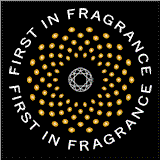By Donna
“A gourmand
leather and tobacco fragrance so good it belongs to a rare scent
category for me: perfume so good I want to drink it. Dark vanilla and
creamy white florals voluptuously bloom as leather, tobacco and civet
rise up. Peach and plum add some bruised sweetness.”
-excerpt
from the description of Lanvin's Rumeur (1934) in
Scent &
Subversion: Decoding
a Century of Provocative Perfume
by Barbara Herman
As regular readers
of this blog know by now, I have a serious ongoing love affair with
vintage perfume. Most books about perfume seem to about the inner
workings of the industry (Chandler Burr's The Perfect
Scent) or reviews of currently available fragrances ( Perfumes:
The Guide by Luca Turin and Tania Sanchez). There are also books
about the history of perfume, or how fragrances are made, filled with
pictures of Bulgarian rose fields and Middle Eastern spice markets. I
enjoy reading all kinds of books about fragrance, but there has
always been something missing. At last, now there is a book that
celebrates the perfumes of the past and really tells us what they
smell like: Scent & Subversion:
Decoding a Century of Provocative Perfume by Barbara
Herman. Many of you may also be readers of Ms. Herman's
delightful blog, Yesterday's
Perfume. The logical next step from writing reviews and
giving us fascinating historical tidbits about vintage scents was
writing a book, and I am so very glad that she did.
The book takes us
on a decade-by-decade journey from the origins of modern perfumery up
to the end of the twentieth century. Iconic fragrances such as
Houbigant's Fougère
Royale (1882) and Guerlain's Jicky (1889) were
revolutionary in their time, marking the beginning of the era when
synthetic materials were first used in perfumery; this advance made it
possible for an explosion of creativity that continues today as
perfumers use everything in their arsenals to make interesting,
unusual and yes, provocative fragrances instead of the simple floral
waters that were popular before that time. The “subversion” part
comes from the hidden language of perfumes; the animalic and indolic
essences used to compose them can speak louder than words and express
the intentions of the wearer with no verbal explanation needed. This
was also a time when women were finding ways to express themselves
beyond the boundaries of hearth and home, and perfumery reflected
this seismic cultural shift. Caron's fiercely feral Tabac Blond
(1919) was made for covering up the smell of cigarette smoke, which
was still a shocking habit for women at the time. Lanvin's My Sin
(1924) is nominally a floral, but oh, what a floral it is,
narcotically sweet, redolent, mesmerizing, with animal base notes
that virtually growl. It is also one of my own favorite examples of
what the now-banned nitro musks contributed to perfumery. Ms. Herman
aptly compares their use in fragrances to the way foods taste and
feel with and without butter, a perfect analogy; today's perfumes
just can't capture that feeling.
The book is
seductive in its own right – I could not put it down as I eagerly
devoured every page. After an introduction that details the author's
own developing fascination “real” perfume, the heart of her
book is an overview of a broad spectrum of famous (and not so
famous) perfumes through the years. Where possible, the main fragrance notes
are also listed along with her own impressions. Many of the
fragrances are those that I also know and love, and as I got into the
later chapters I found “vintage” perfumes that I remember from
before they were vintage, being a lady of a certain age myself. The
author's descriptions made me look at them with new eyes, and now I
want to rediscover such once-common gems as Revlon's Intimate
(1955) and Moon Drops (1970) all over again. It is
made even more enticing by the impressive array of vintage print
perfume ads on almost every page, many of which I had never seen
before and some of which are hilariously retro, and little-known
historical details and fun facts about the perfume houses and
perfumers that will be like so much catnip to avid readers.
What I found most
engaging in this book is the unabashed love and enthusiasm it
projects – this is not an “expert's” careful dissection of
notes or a scientific treatise on perfume making. It's an extended
fan letter written by a true amateur, someone very much like me, like
us, like so many perfume fanatics who fall into the perfume
world and get hopelessly pulled in by the romance, the history, the
glamour, the personalities, and the sheer beauty of the perfumes
themselves.
The book's third
act is a bit of a surprise – it has a section that tells how modern
perfumery is rising to the challenge of making perfumes that are
neither bland nor boring, but continuing the heritage of the greats
of the past, including Christopher Brosius of CB I Hate
Perfume and Antoine Lie, the perfumer for the avant-garde
house of Etat Libre d'Orange, known for its sometimes shocking
fragrances and packaging. It is reassuring to know that today's niche
and artisan perfumers are turning their backs on the corporate
mainstream and its increasingly restrictive rules and making perfume
that speaks from the heart. It ends with a very informative “Perfume
101” section on how to learn about perfume, how to start a vintage
fragrance collection, a glossary, and a list of recommended reading.
I predict with confidence that this book will be on everyone else's
list of recommended reading from now on – it's indispensable, and
more fun than should be legal. What are you waiting for, go get your
copy!
Image
credit: the cover of Scent
and Subversion
via barnesandnoble.com
Disclosure:
I purchased my copy of this book.
Labels: book reviews, Donna, Vintage perfume | 












